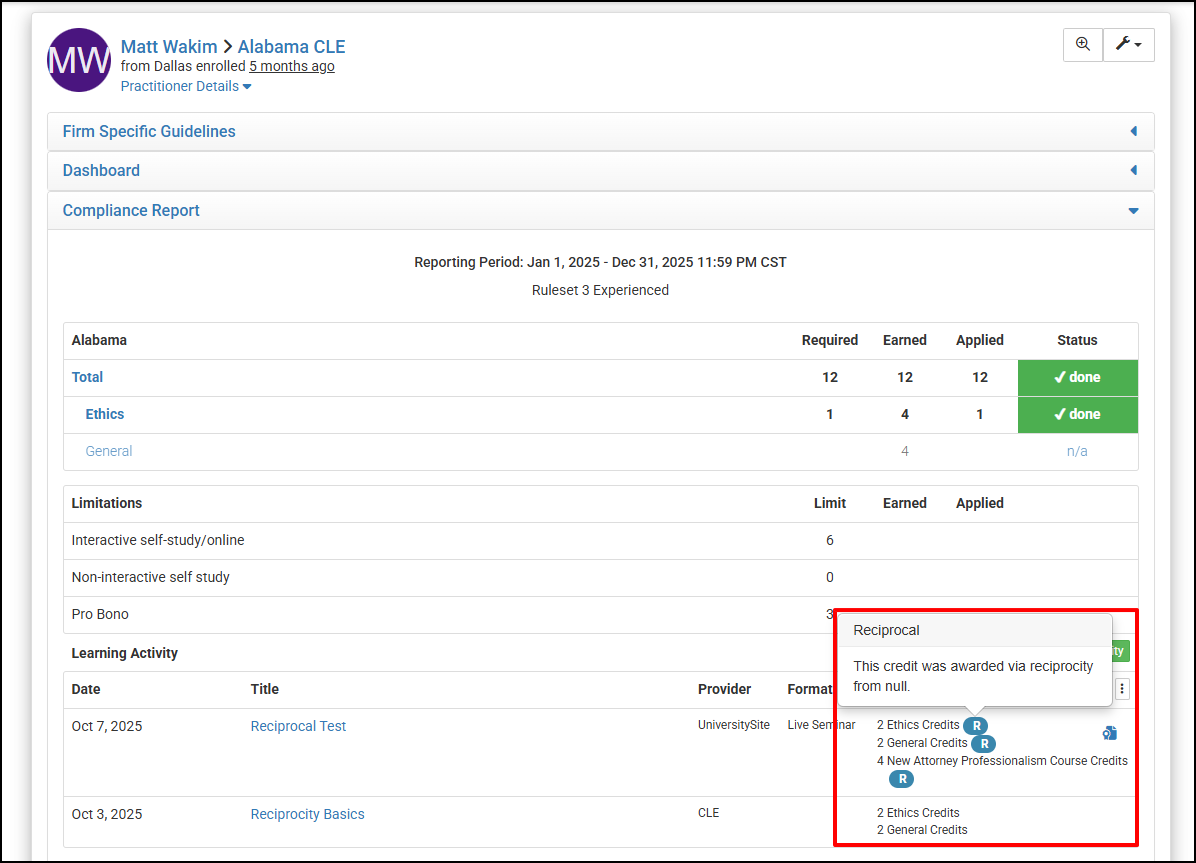Award Reciprocal CLE Credit
Reciprocal credits are added when a Course is approved in one jurisdiction but is also accepted in another jurisdiction.
Steps
1. In InstructorSite, from the Main Navigation Bar, select + New and then Course.

2. Create a new Course.
3. Once the Course Profile fields have been added, scroll down to the Credits section.
4. Select a credit to Award.
Note: The Reciprocal slider cannot be used until more than one jurisdiction credit has been added.
5. Input the desired amount for each type of credit.

6. Select the Credit to be awarded as Reciprocal.
7. Input the desired amount for each type of credit and choose Reciprocal. For this example, the Alabama credit was added to the course as a Reciprocal credit to the New York Credit. It shows the attendee will receive a New York Ethics credits and an Alabama Ethics credit.

8. Select Save Course.
9. From the Course Overview, on the righthand side, under Credits, the Alabama credit will be marked as (awarded via reciprocity from New York).

10. Certificates can be sent out once the Event has been created and Attendance recorded.
Note: Only Certificates for the jurisdictions that approved the Course accreditation will be issued. In this example, this Alabama attorney will be issued a New York CLE Certificate because Alabama credit is being awarded via reciprocity from New York.

- In LearningSite, when an attorney goes to register for the Event, they will know which credits they can earn Reciprocity for.

Implications
1. Compliance Reports
When reciprocal credits are earned, the credits will appear on the Course history and the User's compliance report as reciprocal.

2. Year-End Reports
When reciprocal credits are earned, they do not appear on the Year-End Report simply because the Course was not approved by that State Board.
For example, if the provider has a Course approved for CA credits only and claims NY reciprocal credits, it wouldn't make sense for the NY Year-End report to show this because the Course wasn't approved by the NY Board.
3. Certificates
When reciprocal credits are earned, a Certificate for the reciprocal jurisdiction will not be available. They would receive the Certificate for the jurisdiction where the credits were originally approved.
For example, if the Course was approved in CA, and the Attendee claims NY credit through reciprocity, the Attendee would only receive the Certificate for CA and not NY. This means when they report their NY credits they would present the CA Certificate and report the NY credits as reciprocal. The Attendee's Course history and NY Plan will confirm the Course has CA credit and NY reciprocal credit.
